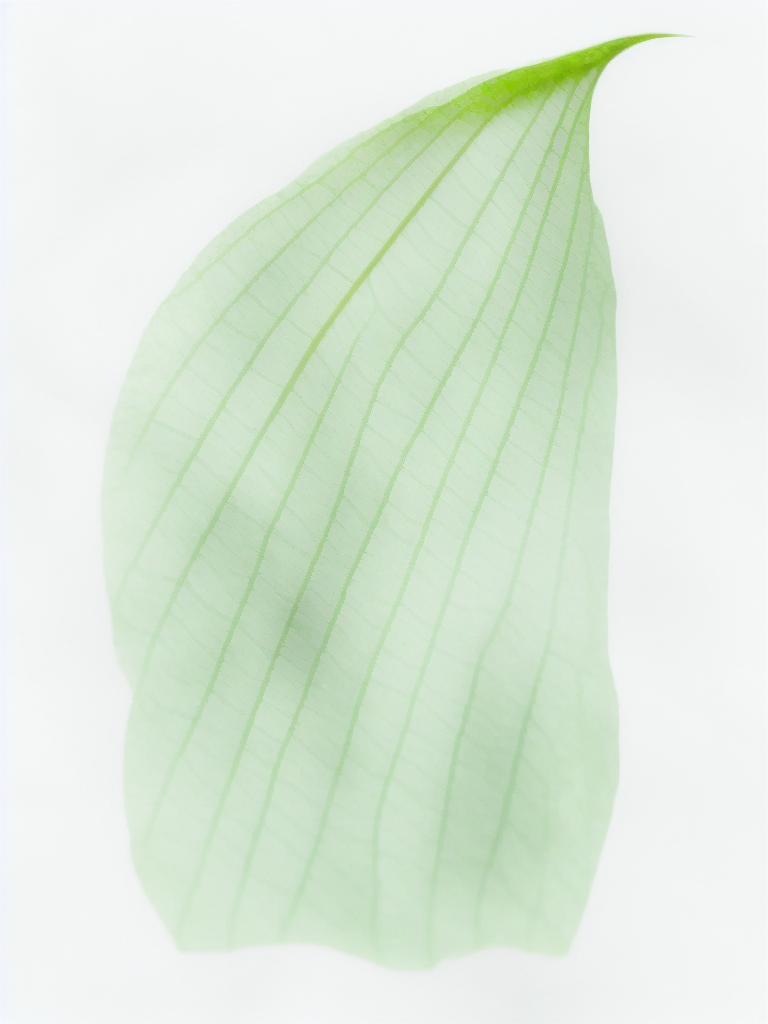Paper Tree
Paper trees are distributed unevenly throughout most of the world of Derkomai, except in cold, polar regions, high in the mountains, and in swamps and marshes. The leaves of the paper tree are a pale green color, thin, without prominent veins, but tough and fibrous. Each leaf is roughly 9 inches (23 cm) wide by 12 inches (30 cm) long, rectangular, but with rounded corners. As they age, they turn a very pale green and eventually drop to the ground. Paper tree leaves are harvested, soaked in salt water (which removes toxins and bleaches them), pressed, dried, trimmed, and then used for writing, painting, and so on. When they are soaked, paper tree leaves can be pounded to loosen the fibers, then overlapped and pressed together to form larger sheets.
Depending on environmental conditions, paper tree leaves are more or less suitable to make into sheets of paper for writing. Trees growing in harsher climates (dry, windy, cold, or swampy and humid) produce smaller, more veiny, blotchy, or dark-colored leaves that can be brittle, thin, or too curled to use as paper.
Some towns and cities maintain groves of paper trees, cultivated to produce fine leaves. Experts can distinguish from which trees and where each piece of paper was made based on the characteristic color and pattern of the fibers in the paper, how the paper was trimmed, and so on. Paper experts generally recognize that the finest paper comes from paper trees grown in the imperial paper forest in Senyon and processed by the imperial paper makers.
Basic Information
Anatomy
The paper tree is a deciduous softwood tree that grows to about 50 feet (15 meters) tall. The branches are wide-spreading. Numerous large, pale-green, rectangular leaves hang from the branches. The bark of the tree is light greenish-brown and smooth. The wood is nearly white, fibrous, and full of sap, similar to the wood of bamboo. The sap is watery and pale yellow. It causes severe skin irritation (redness, blisters, and peeling) on contact and nausea, vomiting, dizziness, loss of consciousness, and even death if ingested or injected. Smoke from burning the wood is also noxious. Because of the fibrous nature of the wood and noxiousness of the sap, it is never used as lumber. The sap is sometimes used as a poison. The poisonous sap can be neutralized by hot salt water.
The leaves of the tree aren't true leaves. They start out as short spikes that protrude from buds on the sides of main branches. As the leaf matures, it unrolls in the manner of a scroll, hanging down from the spike. After a few weeks, the leaf dries and falls to the ground. At that point, a seed boll grows from the end of the spike. After the seed boll matures and is blown away on the wind, some of the spikes shrivel and fall off, while others grow into new main branches.
Genetics and Reproduction
Paper trees produces cottony, seed-containing bolls that are spread on the wind. When the bolls touch the ground, they dissolve into paste that adheres the seed to the ground, protects it, and provides nutrients that promote germination.
Growth Rate & Stages
Paper trees are fairly fast-growing. From germination to maturity, where they reach about 50 feet (15 meters) in height, requires about 25 years. The leaves are not suitable for harvesting and use as paper until the tree is about 30 years old. Until that time, the leaves are too small and not fibrous enough and will not withstand the processing needed to turn them into paper. As they age past maturity, paper trees weaken and eventually fall. Few reach 100 years in age, though some specimens are far older. Those old trees are highly valued, as they produce leaves that can be processed to make extremely durable paper.
Ecology and Habitats
Paper trees grow throughout the world of Derkomai, except in very cold, dry, or extremly wet conditions. They are not found in polar regions, in swamps, or high in the mountains, above roughly 8000 feet elevation (2500 meters), or above the treeline for deciduous trees at that latitude.
Additional Information
Uses, Products & Exploitation
The leaves of paper trees are used, as the name indicates, to make paper. In addition, the sap of paper trees can be used to make irritants and poisons, though poison made from paper tree sap is relatively easy to counter with hot salt water. When the sap is ingested or smoke from burning paper tree wood is breathed, the effects are more pronounced and antidotes are more difficult to acquire. The imperial physicians of Senyon have antidotes, and those antidotes may be acquired at great price through trade. The physicians for the royal familes of Derkomai are likely to have a few doses of antidotes of varying efficacy.
Geographic Origin and Distribution
Paper trees grow throughout Derkomai, except in cold, polar regions, high in the mountains, and in swamps and marshes.
Lifespan
100+ years
Average Height
Mature paper trees are about 50 feet (15 meters) in height. Trees growing in harsh conditions are much smaller. In arid or cold climates, they may grow as shrubs, with small, veiny, fibrous, leaves.



Comments